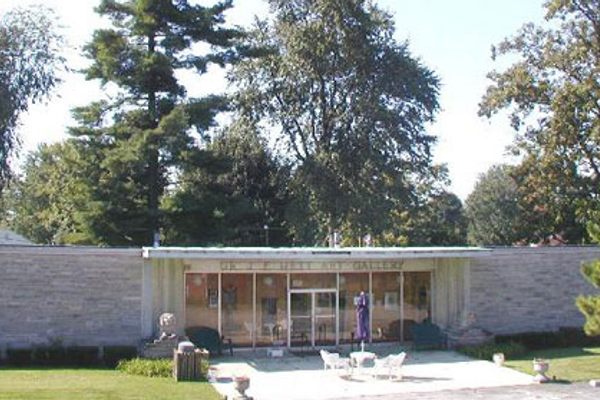From Ectoplasm to Trance Art: The Hett Gallery of the Chesterfield Spiritualist Camp
Photograph of the spirit Silver Belle with the medium Ethel Post-Parrish. Her cousin, Mable Riffle, managed the Camp Chesterfield. (via Wikimedia)
Table tipping, ectoplasm, and rapping sounds coming out of the blue — the vision we have now from the Spiritualist movement in its heyday seems always picturesque — superstition tinged in sepia. But one should remember that during the second part of the 19th century, contacting the other side was almost fashionable, and mediumship and spirit manifestations intrigued scientists, intellectuals, and politicians alike. Seances were a democratized practice and occurred almost every night in some salons of America’s high society.
Spiritualist Camp (via Camp Chesterfield)
More than a century has passed, and the spiritualist community is still very active in several of its historical headquarters, surviving the rationalist attacks and frequent accusations of fraud. Founded in 1886 by the Indiana Association of Spiritualists, Camp Chesterfield is the oldest in the United States. Its history exemplifies the hectic past of the Spiritualist movement: including their commitment against slavery, their desire to legitimatize their practices and beliefs, and the charges of being impostors and charlatans that they had to endure, which became a national sensation after being exposed by Lamar Keene in his book The Psychic Mafia.
It’s a complicated story, yet Camp Chersterfield is an important part of both the Spiritualist movement and local history that needs to be preserved, archived, and make accessible. To do so, the congregation edified an appendant structure in 1954, financed by Dr. J. E. Hett as an elaborate memorial showcase of the Spiritualism field. The job of acquiring objects for the space was entrusted to Mrs. Mable Riffle and her assistant Juliet Ewing Pressing. Together they gathered treasured artifacts and artworks from Spiritualist communities in the United States and all over the world.
The J.E Hett Art Gallery (via Camp Chesterfield)
Divided into three rooms, the Hett Gallery also retraces the history of the camp through portraits of the several generations of mediums and faith healers who have lived there and channeled the deceased. Among the notable relics of the museum are the psychic paintings produced by the automatic drawing of the Bangs Sisters, trumpets and chalkboards used by the spirits to communicate, as well as objects used by the legendary Fox Sisters during their own seances.
“Precipitated” portrait of William T. Stead. Painting by Spirit Artists through the Bangs sisters. Illustration from the book Dawn of the Awakened Mind via The Process of Spirit Painting)
Although the collection presents “evidences” of physical mediumship, the aim of the Hett Gallery is not to convert or recruit new members. These treasured items are, in their eyes, a visual legacy embracing both historical and fine art values.
TABLE TIPPING AND TRANCE ART:
THE HETT GALLERY AND MUSEUM, Chesterfield, Indiana






Follow us on Twitter to get the latest on the world's hidden wonders.
Like us on Facebook to get the latest on the world's hidden wonders.
Follow us on Twitter Like us on Facebook